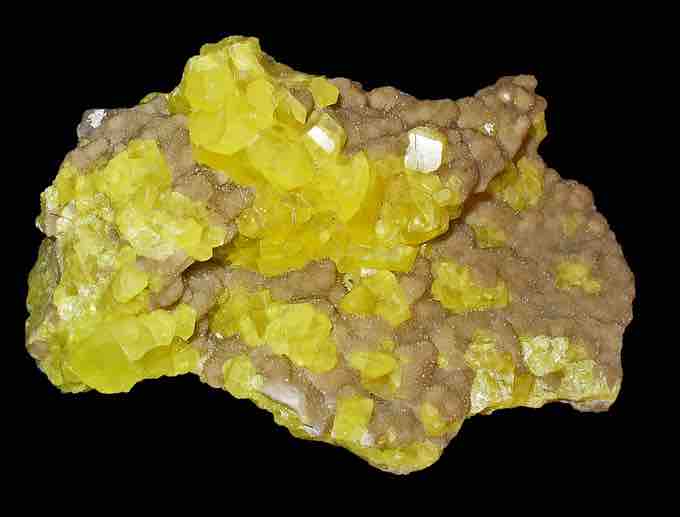Chemical Substances
In chemistry, a chemical substance is a form of matter that has constant chemical composition and characteristic properties. It cannot be separated into components without breaking chemical bonds. Chemical substances can be solids, liquids, gases, or plasma. Changes in temperature or pressure can cause substances to shift between the different phases of matter.
An element is a chemical substance that is made up of a particular kind of atom and hence cannot be broken down or transformed by a chemical reaction into a different element. All atoms of an element have the same number of protons, though they may have different numbers of neutrons and electrons.
A pure chemical compound is a chemical substance that is composed of a particular set of molecules or ions that are chemically bonded. Two or more elements combined into one substance through a chemical reaction, such as water, form a chemical compound. All compounds are substances, but not all substances are compounds. A chemical compound can be either atoms bonded together in molecules or crystals in which atoms, molecules or ions form a crystalline lattice. Compounds made primarily of carbon and hydrogen atoms are called organic compounds, and all others are called inorganic compounds. Compounds containing bonds between carbon and a metal are called organometallic compounds.
Chemical substances are often called 'pure' to set them apart from mixtures. A common example of a chemical substance is pure water; it always has the same properties and the same ratio of hydrogen to oxygen whether it is isolated from a river or made in a laboratory. Other chemical substances commonly encountered in pure form are diamond (carbon), gold, table salt (sodium chloride), and refined sugar (sucrose). Simple or seemingly pure substances found in nature can in fact be mixtures of chemical substances. For example, tap water may contain small amounts of dissolved sodium chloride and compounds containing iron, calcium, and many other chemical substances. Pure distilled water is a substance, but seawater, since it contains ions and complex molecules, is a mixture.
Chemical Mixtures
A mixture is a material system made up of two or more different substances, which are mixed but not combined chemically. A mixture refers to the physical combination of two or more substances in which the identities of the individual substances are retained. Mixtures take the form of alloys, solutions, suspensions, and colloids.

Naturally occurring sulfur crystals
Sulfur occurs naturally as elemental sulfur, sulfide, and sulfate minerals and in hydrogen sulfide. This mineral deposit is composed of a mixture of substances.
Heterogeneous Mixtures
A heterogeneous mixture is a mixture of two or more chemical substances (elements or compounds), where the different components can be visually distinguished and easily separated by physical means. Examples include:
- mixtures of sand and water
- mixtures of sand and iron filings
- a conglomerate rock
- water and oil
- a salad
- trail mix
- mixtures of gold powder and silver powder
Homogenous Mixtures
A homogeneous mixture is a mixture of two or more chemical substances (elements or compounds), where the different components cannot be visually distinguished. Often separating the components of a homogeneous mixture is more challenging than separating the components of a heterogeneous mixture.
Distinguishing between homogeneous and heterogeneous mixtures is a matter of the scale of sampling. On a small enough scale, any mixture can be said to be heterogeneous, because a sample could be as small as a single molecule. In practical terms, if the property of interest is the same regardless of how much of the mixture is taken, the mixture is homogeneous.
A mixture's physical properties, such as its melting point, may differ from those of its individual components. Some mixtures can be separated into their components by physical (mechanical or thermal) means.